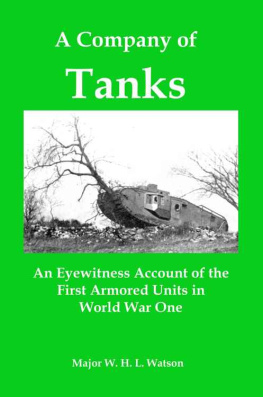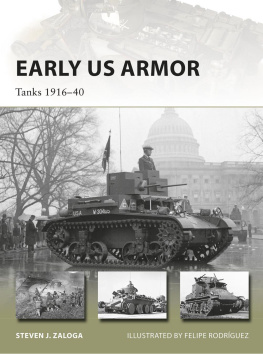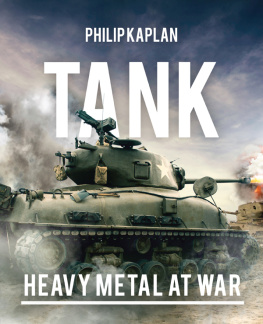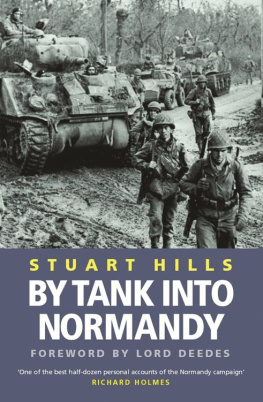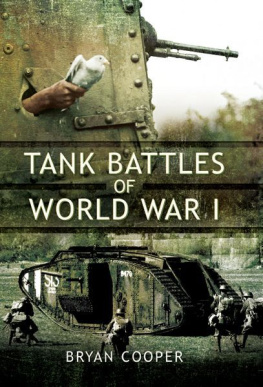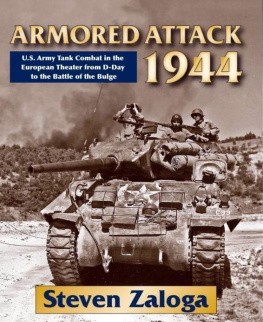A Company of Tanks
An Eyewitness Account of the First Armored Units in World War One
by Major W. H. L. Watson
Red and Black Publishers, St Petersburg, Florida
First Published by William Blackwood and Sons, Edinburgh and London, 1920
Contact us at:
Contents
Preface
By 1917,World War One was a stalemate. Both the Entente and the German armies werebloodied and exhausted. The development of the machine gun and the shrapnelartillery shell had given the defensive side an enormous advantage in warfare.Both sides were locked inside extensive trench networks from which they wouldsend waves of men to storm across No-Mans-Land to try to take the enemystrenchesonly to be mowed down by machine guns and artillery. For years,hundreds of thousands of men were cut down in futile attacks that gained onlyscant yards, which were often then lost in a counter-attack. In desperation,both sides tried every conceivable method to break through the trenches andreach open ground where they could maneuver, and new weapons were introduced ata furious paceairplanes, hand grenades, trench mortars, poison gas,submachine guns, flamethrowers, aerial bombs. None of them worked. It seemed asif the war would never end.
Then theUnited States declared war on Germany.
WhenWoodrow Wilson joined the Entente alliance in April 1917, the US was a virtualmilitary nonentity. Its army was tiny, and the only recent war experience it hadwas beating the aged and crumbling Spanish Empire in 1898, and ineffectuallychasing Pancho Villa around northern Mexico in 1916. The first American troopsto arrive in Europe had to be hurriedly provided with French equipment andweapons, since the US had none of its own.
Nevertheless,the entry of the United States was decisive. The Germans knew that not onlywould Americas massive industrial capacity soon be flooding the battlefieldwith brand-new equipment and supplies, but the fresh American troops, once theywere trained and equipped, would shore up the wounded Entente forces andoverwhelm the outnumbered Germans by sheer weight. If Germany were to have anychance at all of winning the war, it would have to be done quickly, beforesignificant numbers of Americans could be trained and shipped to Europe.
The GermanKaiser gambled that an all-out offensive in early 1918 would be enough to defeatBritain and France before the US could effectively intervene. The German attackhit the exhausted British and French like a tidal wave, but it did not breakthem. The Germans, like the Entente, were unable to overcome the advantages heldby the defender in trench warfare. The German offensive broke against Britishand French machine guns, just as the Entente attacks had always broken againstthe German. The German troops withdrew to the heavily-fortified Hindenburg Lineand awaited the inevitable Allied assault.
Now,however, the British possessed the technical means of breaking the trenchstalemate, and by mid-1918, with significant numbers of American troops finallybeginning to arrive, the Allies were in a position to use it.
In1916, the British had begun development of a tracked armored vehicle, armed withmachine guns and light artillery cannon, that would be able to plow its waythrough the barbed wire and over the German trenches. Originally called theland battleship, it was given the code name tank to hide its naturefrom German spies, and the name tank stuck. The British Mark I tank wasfirst battle-tested in September 1916, and a group of Mark IV tanks proved theirpotential during the Battle of Cambrai in November 1917.
By 1918,the British were turning out large numbers of heavy Mark V tanks and Whippetmedium tanks, while the French were manufacturing the Renault light tank. At theBattle of Amiens in August 1918, a force of Allied tanks, supported byground-attacking airplanes, broke through the German lines. The decisiveanti-trench weapon had been found.
Thisaccount of the early tanks was written by the commander of one of the firstarmored units in the British Army. Major Watson describes the painful process oflearning through bitter experience how armored vehicles can operate usefully inan area where they had never been used before, the early mistakes and defeats,and the ultimate triumph as the Tank Companies broke through the Germandefenses, ended the war, and went on to assume the dominant position on thebattlefield.
Editor
Red andBlack Publishers
Chapter I. On The XIth Corps Front
(October to December 1916)
The village of Locon lies five miles out from Bethune, on the Estairesroad. Now it is broken by the war: in October 1916 it was as comfortable andquiet a village as any four miles behind the line. If you had entered it atdusk, when the flashes of the guns begin to show, and passed by the square andthe church and that trap for despatch-riders where the chemin-de-fer vicinalcrosses to the left of the road from the right, you would have come to a scrapof orchard on your left where the British cavalrymen are buried who fell in1914. Perhaps you would not have noticed the graves, because they were overgrownand the wood of the crosses was coloured green with lichen. Beyond the orchardwas a farm with a garden in front, full of common flowers, and a flagged path tothe door. Inside there is a cheerful little low room. A photograph of the Princeof Wales, a sacred picture, and an out-of-date calendar, presented by the PetitParisien, decorate the walls. Maman, a dear gnarled old womanold fromthe fieldsstands with folded arms by the glittering stove which projects intothe centre of the room. She never would sit down except to eat and sew, butwould always stand by her stove. Papa sits comfortably, with legs straight out,smoking a pipe of caporal and reading the TelegrammeJulienne,pretty like a sparrow, with quick brown eyes, jerky movements, and fuzzy hair,the flapper from the big grocers at La Gorgue, for once is quiet and mendsHamonds socks. In a moment she will flirt like a kitten or quarrel withLouie, a spoilt and altogether unpleasant boy, who at last is going to school.The stalwart girl of seventeen, Adrienne, is sewing laundry marks on Louieslinen. It is warm and cosy.
Thecoffee is ready. The little bowls are set out on the table. The moment has come.From behind a curtain Hamond produces, with the solemnity of ritual, a batteredwater-bottle. He looks at Papa, who gravely nods, and a few drops from thewater-bottle are poured into each steaming bowl of coffee. The fragrance isineffable, for it is genuine old Jamaica.
We talk ofthe son, a cuirassier, and when he will come on leave; of the Iron Corpswho are down on the Somme; of how the men of the Nord cannot be matched by thoseof the Midi, who, it is rumoured, nearly lost the day at Verdun; of Mme. X. atGonnehem, who pretends to be truly a Parisienne, but is only a carpentersdaughter out of Richebourg St Vaast; of the oddities and benevolence of M. le Maire. Adriennediscusses learnedly the merits of the Divisions who have been billeted in thevillage. She knows their names and numbers from the time the Lahore Divisioncame in 1914. We wonder what are these heavy armoured motorcars of a new typethat have been a little successful on the Somme. And we have our family jokes.Peronne est prise, we inform Maman, and make an April fool ofherwhile, if the line is disturbed and there is an outbreak of machine gunfire or the guns are noisy, we mutter, Les Boches attaquent! andlook for refuge under the table.
In April oflast year, when the Boche attacked in very truth, Maman may have remembered ourjoke. Then they piled their mattresses, their saucepans, their linen, and somefurniture on the big wagon, and set out for HingesBethune was shelled andfull of gas. I wonder if they took with them the photograph of the Prince ofWales? There was bitter fighting in Locon, and we must afterwards have shelledit, because it came to be in the German lines.
Next page
